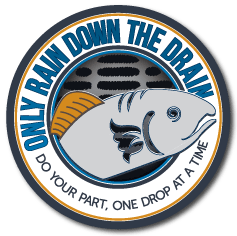Watershed
We all live in a watershed — the area that drains to a common waterway, such as a stream, lake, estuary, wetland, aquifer, or even the ocean — and our individual actions can directly affect it. Working together using a watershed approach will help protect our nation’s water resources.
There are 62 “Water Resource Inventory Areas” or “WRIAs” in the state of Washington. More than half of those are in eastern Washington. The four main rivers that located in Eastern Washington are the Columbia, Yakima, Spokane and Snake rivers.
Snake River
The Middle Snake Watershed (WRIA 35) is located in the extreme southeast corner of Washington. The WRIA is bordered by the state of Oregon to the south, the state of Idaho to the east, the Palouse Watershed (WRIA 34) to the north, and the Walla Walla (WRIA 32) and Lower Snake (WRIA 33) Watersheds to the west. The basin drains approximately 2,250 square miles within the state of Washington. (NOTE – Approx. 340 square miles of the lower Grande Ronde Watershed is located within WRIA 35 boundaries but is not part of the planning effort). The Middle Snake Watershed encompasses portions of Asotin, Whitman, Garfield, and Columbia Counties within Washington. Diamond Peak, located in the headwaters of the Tucannon River, is the highest point in the basin with an elevation of 6,380 feet, while the confluence of the Snake and Tucannon Rivers is the lowest point at approximately 540 feet.
Primary surface water bodies include the Snake River, Tucannon River, Asotin Creek, and Pataha Creek. Little Goose Dam (RM70) and Lower Granite Dam (RM107) impound the Snake River in WRIA 35. The backwater from Lower Granite Dam extends upstream to the City of Asotin (RM146). The Snake River is free-flowing from this point up to Hells Canyon Dam (RM247) located upstream from the upper end of WRIA 35. Groundwater flows through cracks in the basalt layers as well as the porous sediments sandwiched between the basalts, carrying considerable quantities of groundwater that supply water for irrigation and municipal uses.
Columbia River
Studies have also found significant levels of toxins in fish and the waters they inhabit within the basin. The accumulation of toxins in fish threatens the survival of fish species, and human consumption of these fish can lead to health problems. Water quality is also an important factor in the survival of other wildlife and plants that grow in the Columbia River drainage basin. Timber industry activity further contaminates river water, notably in the increased sediment runoff that results from clearcuts.
Yakima River
The Yakima River flows 215 miles from the outlet of Keechelus Lake in the central Washington Cascades southeasterly to the Columbia River, draining an area of 6,155 square miles. The Yakima River Basin is one of the most intensively irrigated areas in the United States.
Spokane River
The Spokane River is spectacular as it roars through downtown Spokane at high flow. It’s a sight that attracts tens of thousands of visitors a year. But that same water also contains high levels of hazardous pollutants that may harm our health and could affect the aquifer that provides drinking water. Much of the river’s water, particularly during the summer, comes from underground springs fed by the Spokane-Rathdrum Aquifer. The aquifer provides drinking water for 400,000 people in the Spokane area, as well as extensive irrigation water along its course. The use of the aquifer water is so extensive that Spokane Falls, the signature natural feature of the city of Spokane, runs dry during many summers, with all the water being diverted to the Upper Falls and Lower Falls hydroelectric power plants. The lowered water levels have raised the toxicity of the stream, resulting in low concentrations of dissolved oxygen and algae blooms along much of the river’s lower course. In 2002 the Environmental Protection Agency issued a Superfund cleanup plan for the Spokane River-Lake Coeur d’Alene basin. In a controversial move, the Bush administration transferred control of the Idaho portion to the state of Idaho, which opposes the Superfund designation and the cleanup, partly based on its high cost and possible effect on real estate prices. It has also been confirmed that there is heavy metal pollution in the Spokane River, resulting from pollution coming from Lake Coeur D’Alene (a large lake East of Spokane in Idaho) and traveling from the Bunker Hill Superfund Site (BHSS).[7] The Spokane River has also suffered heavily from phosphorus pollution, mostly from dishwashing detergent entering the river. In 2007, an average of 1,769 pounds of phosphorus entered the Spokane wastewater treatment plant every day.
